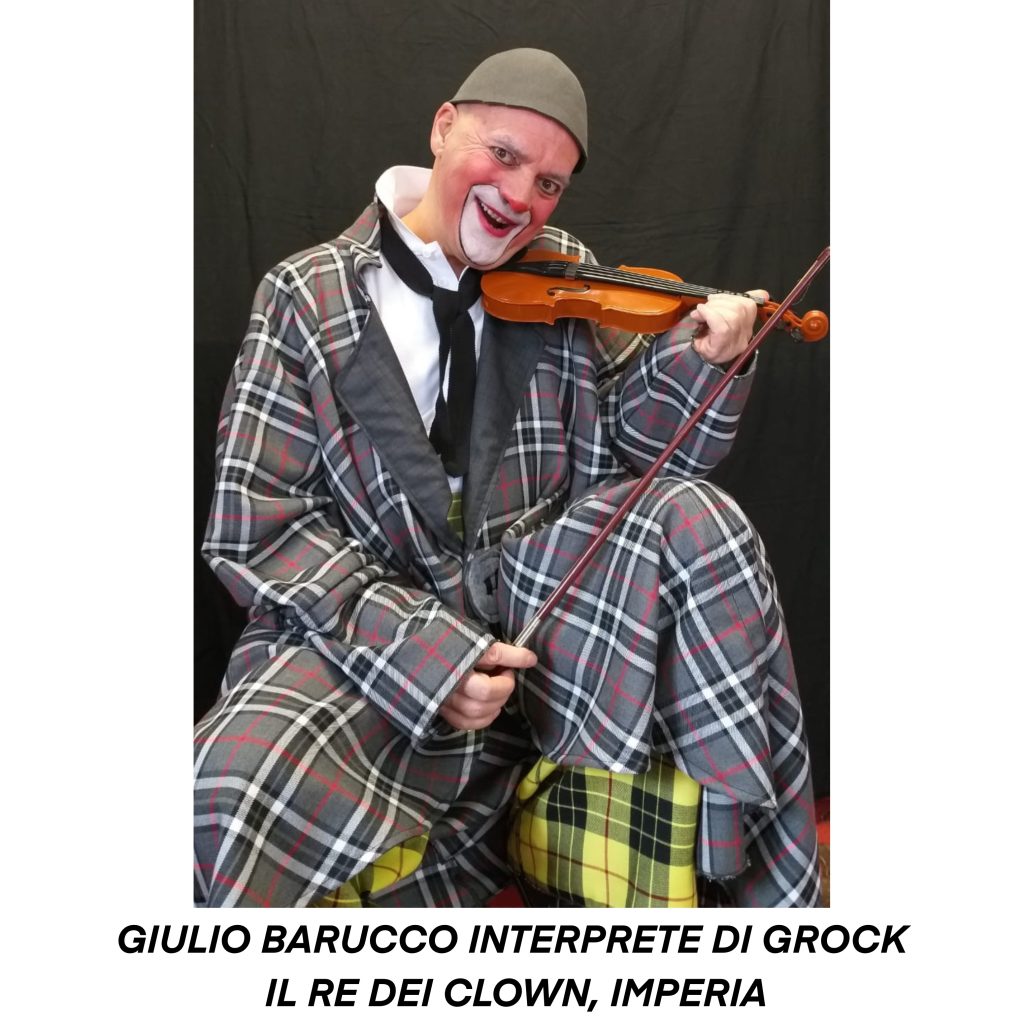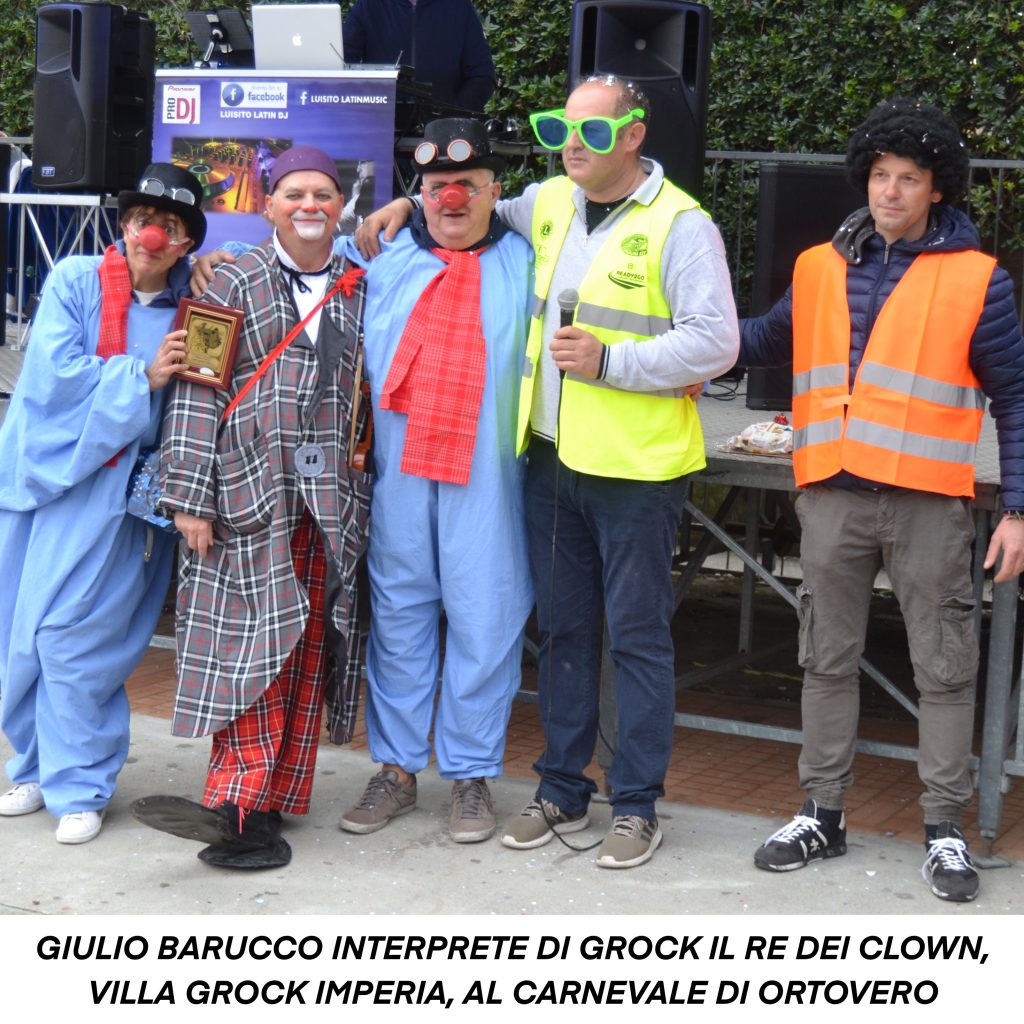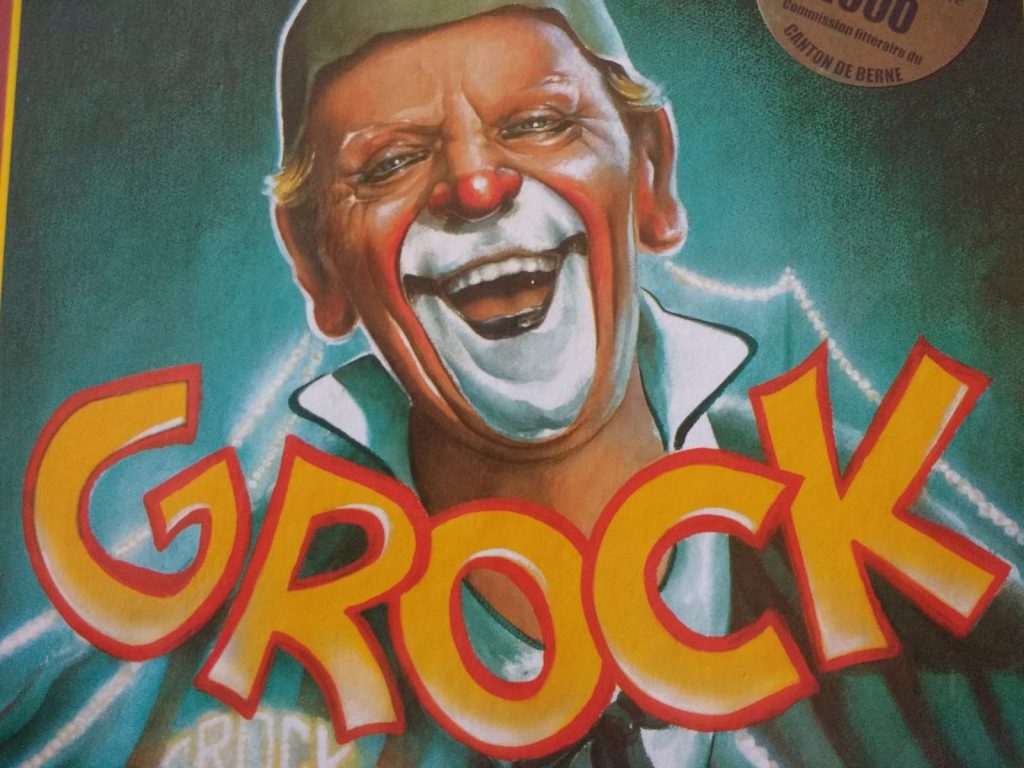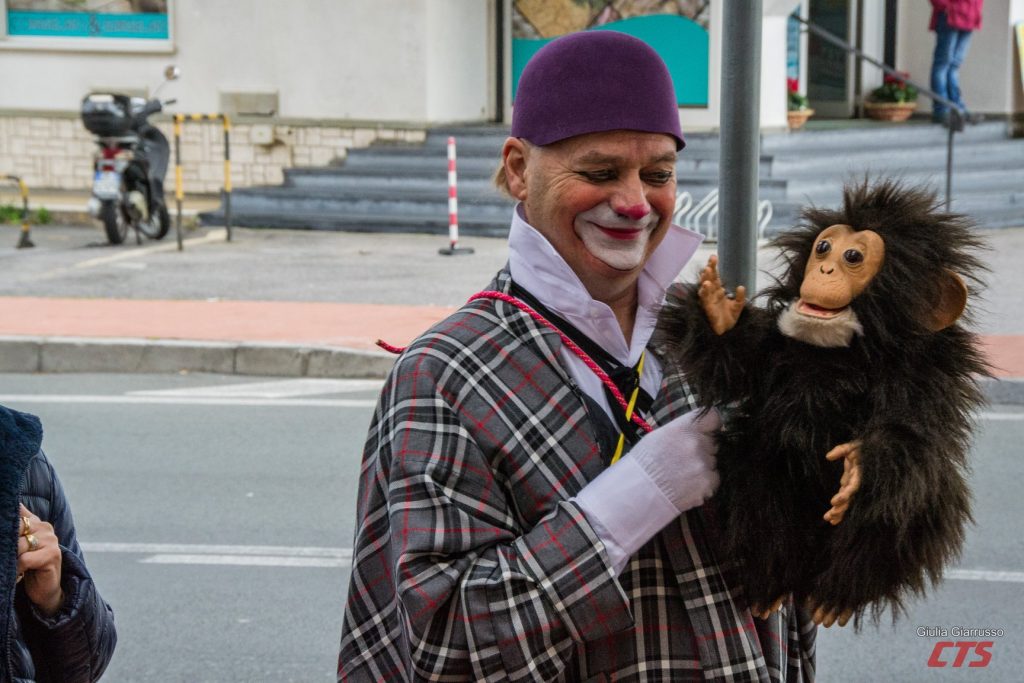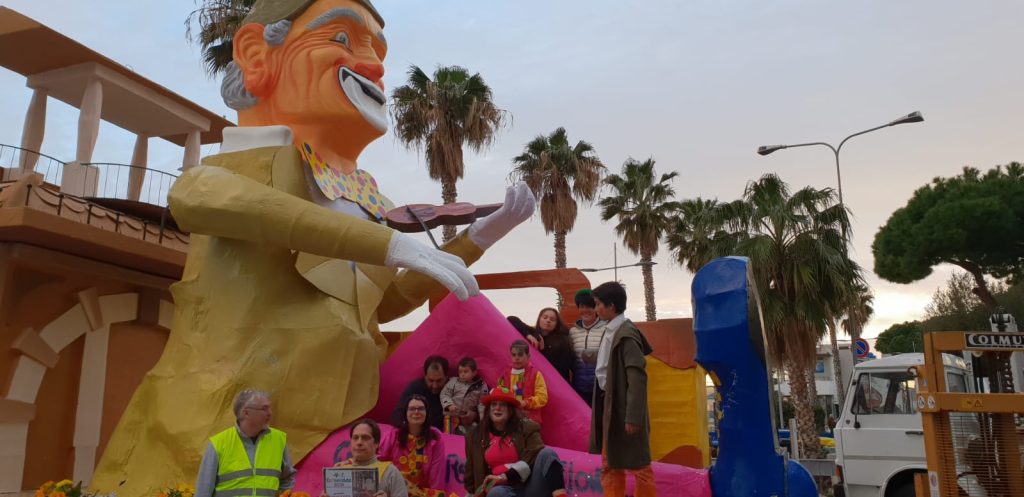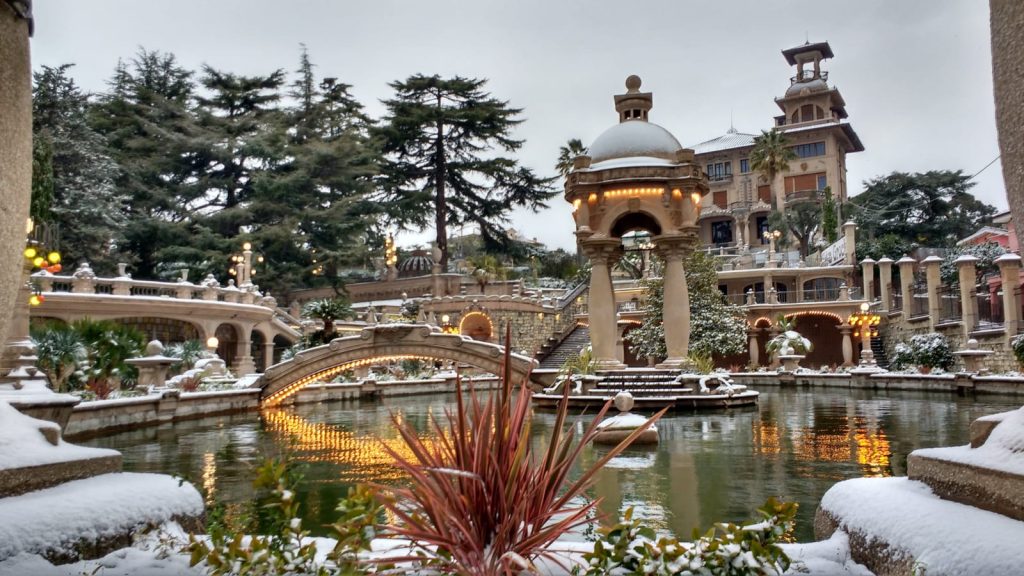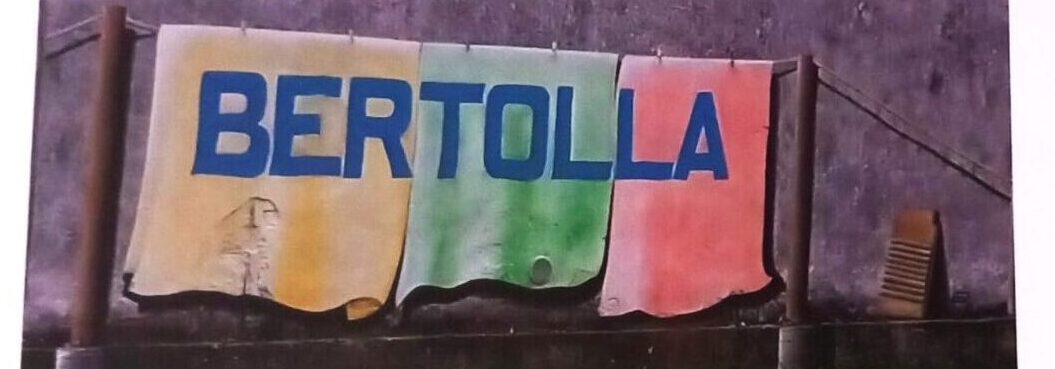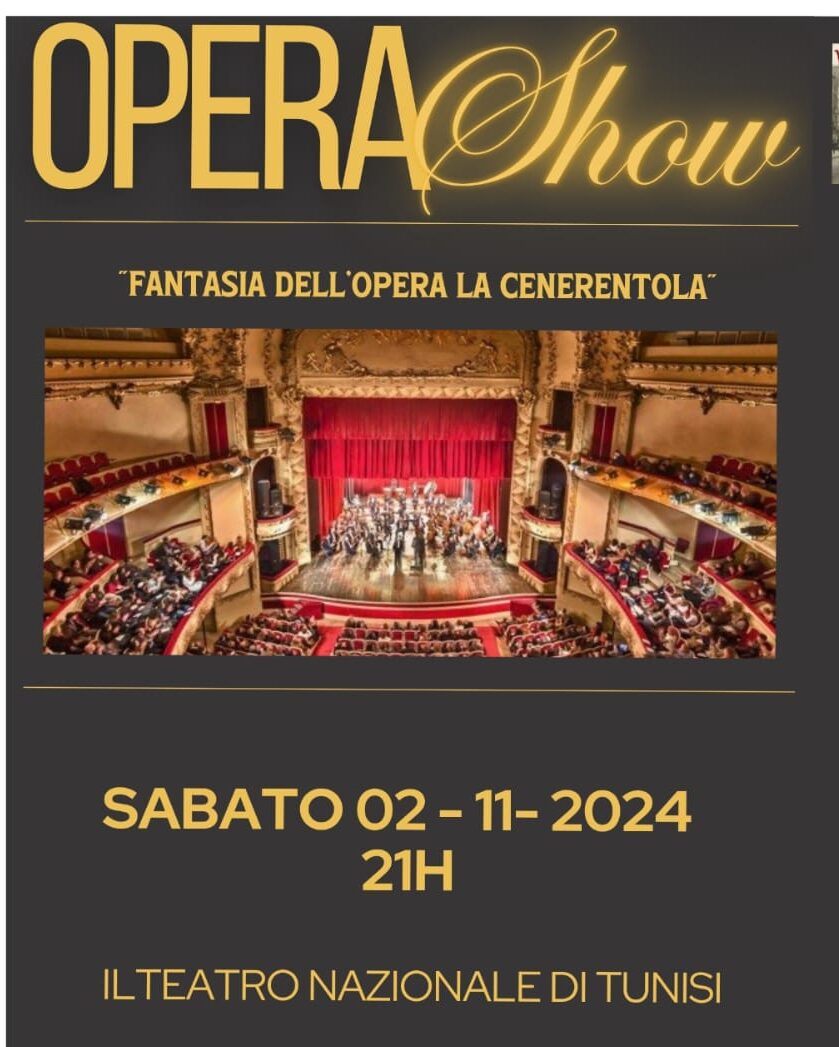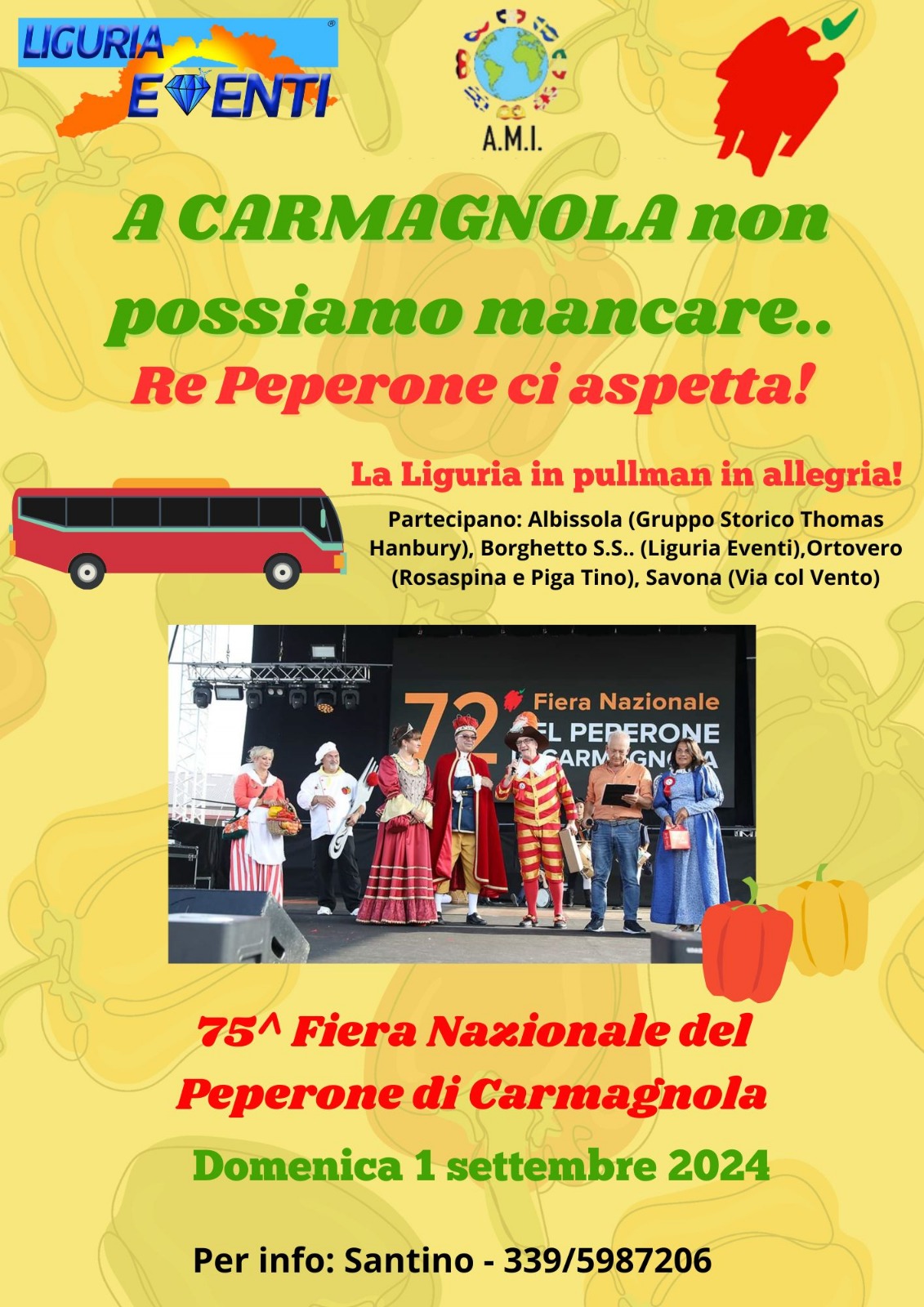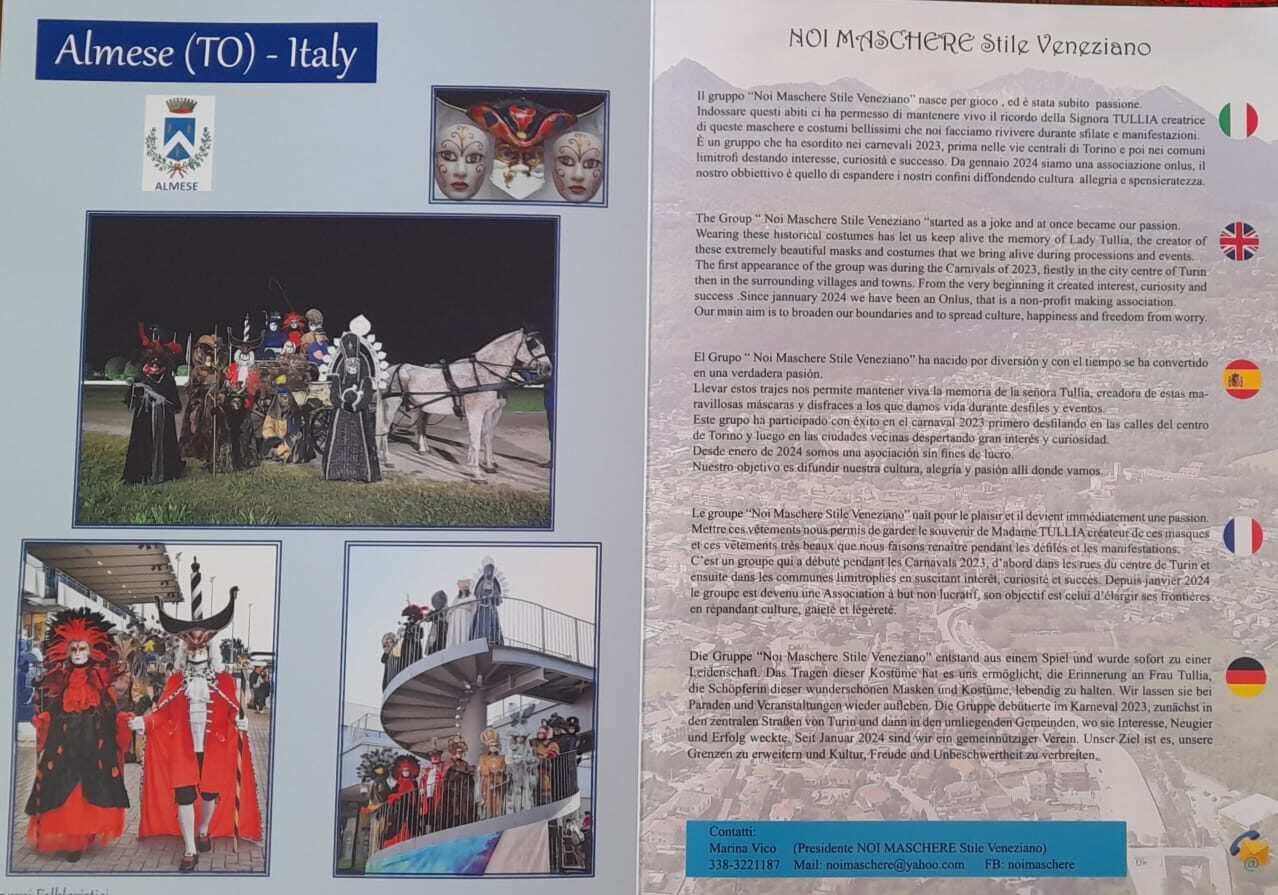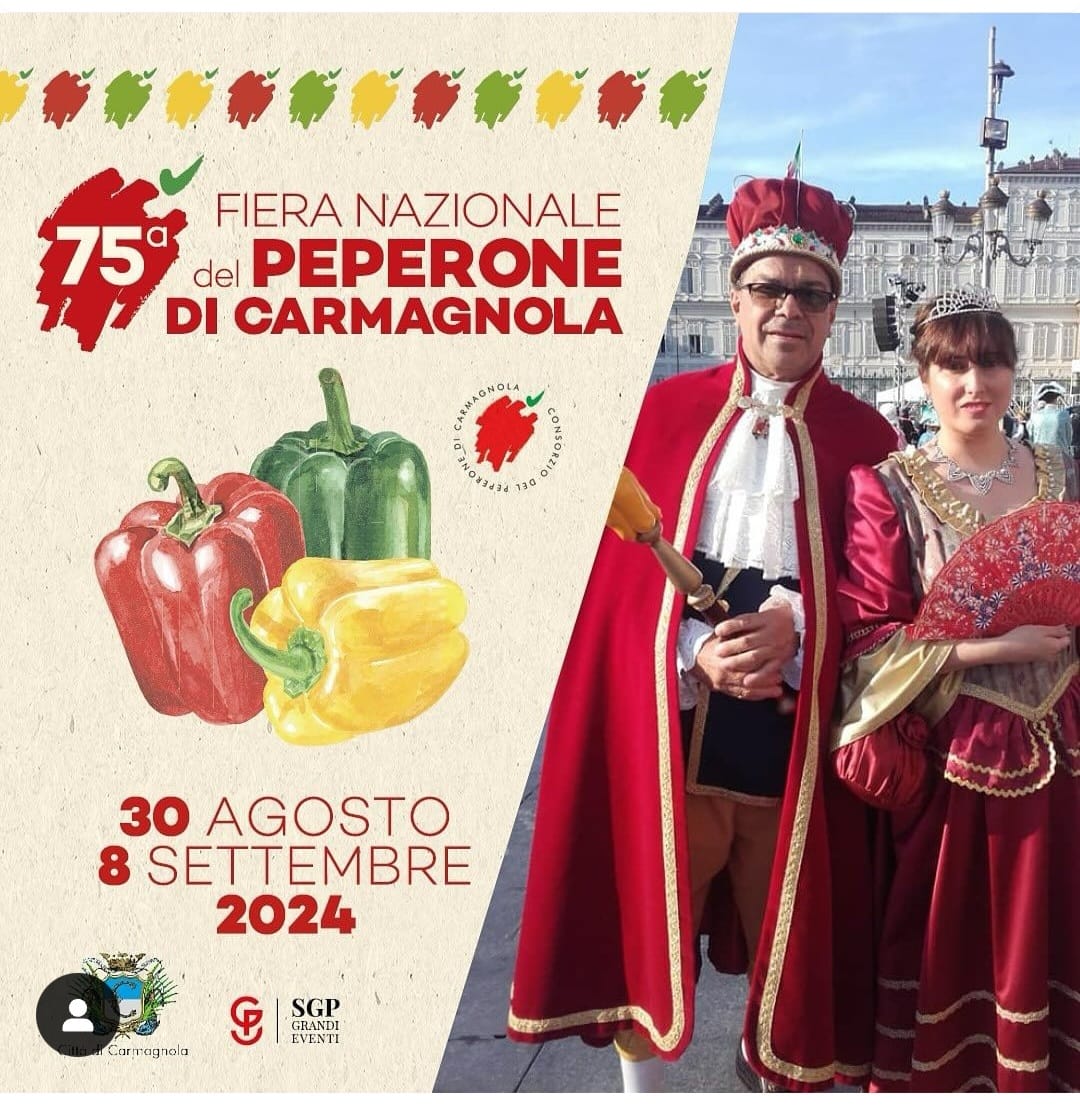GAGGIANO
BELTRAME
L’Associazione Il Rachinaldo nasce nel 2002 su iniziativa di undici fondatori mossi dal desiderio di approfondire la storia e le tradizioni del territorio di Gaggiano e dei Navigli milanesi.
Ad oggi luglio 2023 l’associazione conta cinquantadue soci operativi e ha all’attivo ventuno pubblicazioni, da “Notizia breve” del dicembre 2003 a “Twirling che passione!” del febbraio 2023. Dal 2004, con cadenza pressoché annuale, pubblica un Quaderno giunto alla tredicesima edizione e dal 2005, continuativamente, il calendario “el Gagianin”.
Nel tempo Il Rachinaldo ha promosso numerosi incontri sul dialetto, lezioni nelle scuole e attivato collaborazioni con enti e amministrazioni comunali che hanno dato vita ad altri sei volumi: da “Storia del teatro amatoriale cattolico milanese” del novembre 2012 a “La conchiglia e la fede” e “Cento e più anni a Gaggiano” del novembre 2023.
Il Rachinaldo ha sede al primo piano della Palazzina comunale di Piazza Daccò a Gaggiano. All’interno un fondo librario ricco di pubblicazioni sui Navigli milanesi e sul ciclismo, a disposizione dei soli soci per il prestito a domicilio. Per la consultazione in loco non è necessario essere soci.
L’iscrizione al Rachinaldo è aperta anche a chi viene da lontano, tanto che sono numerosi i soci di Milano e hinterland, nonché bergamaschi e pavesi.
BELTRAME DA GAGGIANO…chi era? “Aveva un gentil ciuffo a ricci e spolverato di cipria, un gran collare raffermo con gallano rigonfio, sul petto gli ondeggiava immensa trina: un panciotto di seta ricamato, calzoni celesti di egual stoffa, tagliati al ginocchio, calze bianche traforate, abito di velluto nero, con grandi bottoni diamantati; per cappello una schiaccina colle piume sugli orli. Brillava il bel Beltramo sul barchetto come un iddio, e alzava il petto e il capo perché tutti lo guardassero…”
A Gaggiano c’è una via intitolata a Beltrame da Gaggiano, ma pochi sanno chi fu. Beltrame è la più vecchia maschera milanese. La tradizione vuole sia nata nell’iconografia popolare nel ‘500. Rappresenta il tipo di contadino un po’ ingenuo e arruffone, che vuole mostrarsi più signore di quanto non sia e le cui vicende creano spesso imbarazzo.
Defendente Sacchi nelle “Novelle”, descrive il nostro eroe così: “Beltrame fu personaggio famoso al suo tempo, e unì le qualità opposte che appunto si richiedono per un eroe di Hugo: fu bello della persona come un amore, ma fu il più scipito uomo nel cui capo mettesse la natura polpa di cervello. Ebbe quindi fortuna e disgrazie per tutta la vita e amore sui teatri ambulanti ov’egli appare, muove il riso non per moti spiritosi come Arlecchino, ma per dabbenaggine, e il più delle volte si piglia le busse da quel manesco di Pulcinella, giacché i più buoni vanno sempre per la peggio”.
Il Sacchi racconta anche che nacque a Gaggiano da don Gregorio Beltramo e da donna Giovanna, che desiderava “sporgere al marito una creatura che per bellezza e per talento il rendesse beato”, sicché si affidò “a una vecchia d’un vicino paese che era in voce la sapesse assai lunga, e sentisse anche di magia”. Ma donna Giovanna fu un po’ avara e la strega, per vendicarsi, fece un incantesimo: “ne uscì lo stesso un bel ragazzone, alto, di carne bianca, naso un po’ aquilino, bocchino gentile, però tonto”.
Beltrame non ha un costume particolarmente caratteristico e veste come un domestico di quei tempi, tanto che viene soprannominato “Baltramm de la Gippa”, per via dell’ampia casacca che indossa.
Egli diventa famoso grazie al suo più grande interprete, l’attore comico Niccolò Barbieri, che ne fa una maschera della Commedia dell’arte, portandola per le corti di tutta Europa. Sul palcoscenico, Beltrame interpreta vari caratteri: l’onesto mercante, il buon marito, il compare e, persino, dividendosi la parte con Tabarino, il padre di Colombina.
Il Baltramm è stata la maschera milanese per eccellenza prima di lasciare il posto a quella più nota di Meneghino, introdotta dal commediografo Carlo Maria Maggi. Lo stesso Meneghino parla di Beltrame come di una maschera più antica di lui; ne “ Il Barone di birbanza”, infatti, Maggi fa dire a Meneghino:
“So ben vari lenguagg, So quel de Porta Snesa,
Quel de Porta Comasna, E quell’anch pù lontan,
di Messer de Gagian, Quel de Venezia mò,
L’è squaes in cò del Mond”.
The “Il Rachinaldo” Association was founded in 2002 on the initiative of eleven founders moved by the desire to delve deeper into the history and traditions of the Gaggiano area and the Milanese Navigli.
As of today, July 2023, the association has fifty-two operational members and has twenty-one publications to its credit, from “Notiziashort” of December 2003 to “Twirling what a passion!” of February 2023. Since 2004, on an almost annual basis, it has published a Notebook now in its thirteenth edition and since 2005, continuously, the “el Gagianin” calendar.
Over time Il Rachinaldo has promoted numerous meetings on the dialect, lessons in schools and activated collaborations with municipal bodies and administrations which have given rise to six other volumes: from “History of the Milanese Catholic amateur theatre” of November 2012 to “The shell and the faith ” and “One hundred and more years in Gaggiano” of November 2023.
Rachinaldo is located on the first floor of the municipal building in Piazza Daccò in Gaggiano. Inside is a book collection full of publications on the Milanese Navigli and cycling, available only to members for home loan. For on-site consultation it is not necessary to be a member.
Membership at Rachinaldo is also open to those who come from far away, so much so that there are numerous members from Milan and its surroundings, as well as from Bergamo and Pavia.
BELTRAME DA GAGGIANO…who was he? “He had a gentle curly forelock dusted with powder, a large stale collar with a swollen collar, immense lace swayed on his chest: an embroidered silk waistcoat, light blue trousers of the same fabric, cut to the knee, openwork white stockings, a velvet dress black, with large diamond buttons; for a hat a little hat with feathers on the edges. The handsome Beltramo shone on the boat like a god, and raised his chest and head for everyone to look at him…”
In Gaggiano there is a street named after Beltrame da Gaggiano, but few know who he was. Beltrame is the oldest Milanese mask. Tradition has it that it was born in popular iconography in the 16th century. He represents the type of farmer who is a bit naive and rude, who wants to appear more gentlemanly than he is and whose affairs often create embarrassment.
Defendente Sacchi in the “Novelle”, describes our hero like this: “Beltrame was a famous character in his time, and combined the opposite qualities that are required for a hero of Hugo: he was beautiful in person like a love, but he was the most insipid man in whose head he put nature’s brain pulp. He therefore had fortune and misfortunes throughout his life and love on the traveling theaters where he appears, he laughs not through witty motives like Harlequin, but out of stupidity, and most of the time he takes knocks from that abusive Pulcinella, since the the best ones always turn out for the worst”.
Sacchi also says that he was born in Gaggiano to Don Gregorio Beltramo and Donna Giovanna, who wanted to “give her husband a creature whose beauty and talent would make him happy”, so she entrusted herself “to an old woman from a nearby town who was he knew a lot about his voice, and also had a sense of magic”. But Donna Giovanna was a bit stingy and the witch, to take revenge, cast a spell: “a handsome boy still emerged, tall, with white flesh, a slightly aquiline nose, a gentle but stupid mouth”.
Beltrame does not have a particularly characteristic costume and dresses like a servant of those times, so much so that he is nicknamed “Baltramm de la Gippa”, due to the large jacket he wears.
He became famous thanks to his greatest interpreter, the comic actor Niccolò Barbieri, who made him a mask of the Commedia dell’arte, taking him to the courts throughout Europe. On stage, Beltrame plays various characters: the honest merchant, the good husband, the buddy and even sharing the role with Tabarino, Colombina’s father.
The Baltramm was the Milanese mask par excellence before giving way to the better-known one from Meneghino, introduced by the playwright Carlo Maria Maggi. Meneghino himself speaks of Beltrame as a mask older than him; in “Il Barone di birbanza”, in fact, Maggi makes Meneghino say:
“I know various languages, I know that of Porta Snesa,
The one at Porta Comasna, And the one even further away,
by Messer de Gagian, That of Venice mò,
L’è squaes in co del Mond”.
Contatti
Raffaele Villa – responsabile
cell 347 4634939
info.rachinaldo@gmail.com
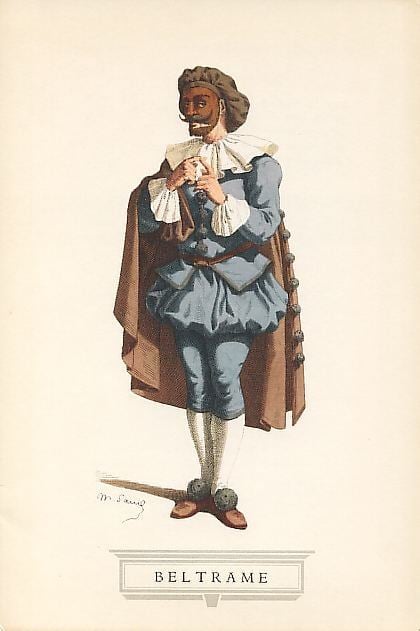
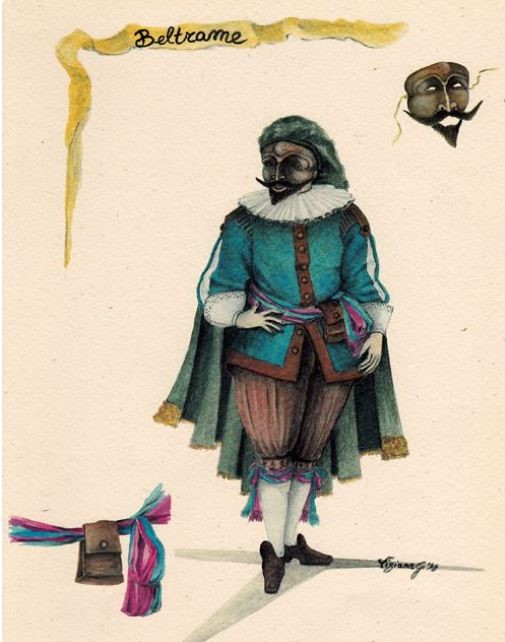
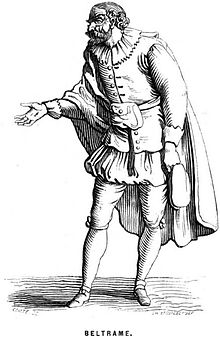
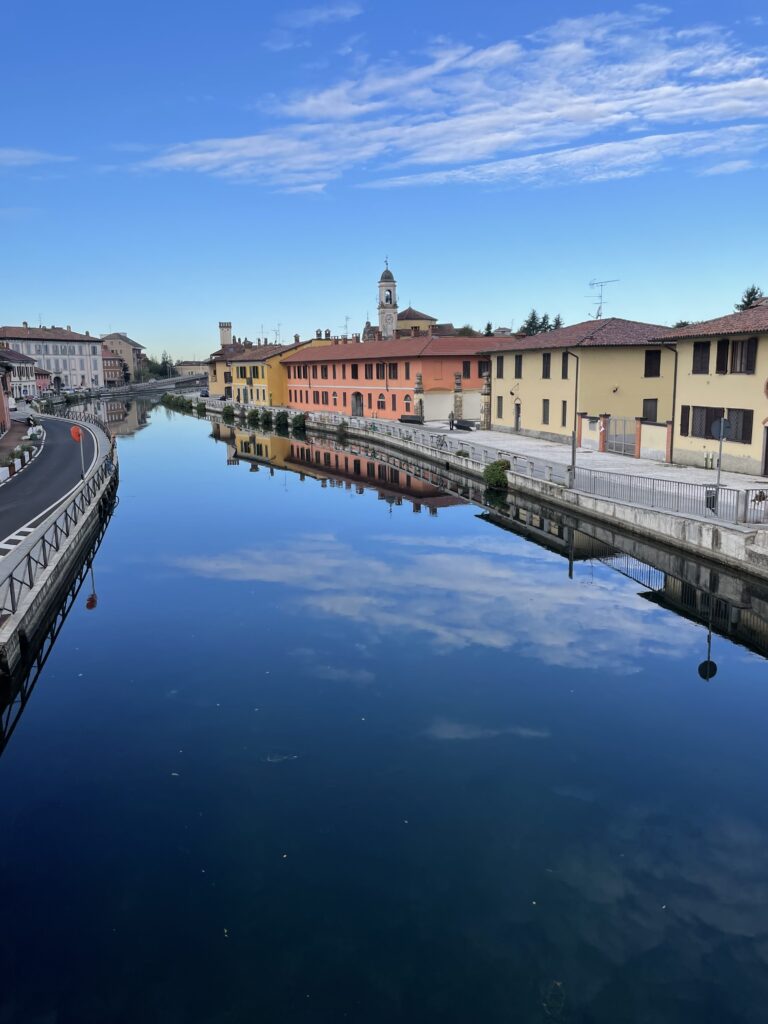
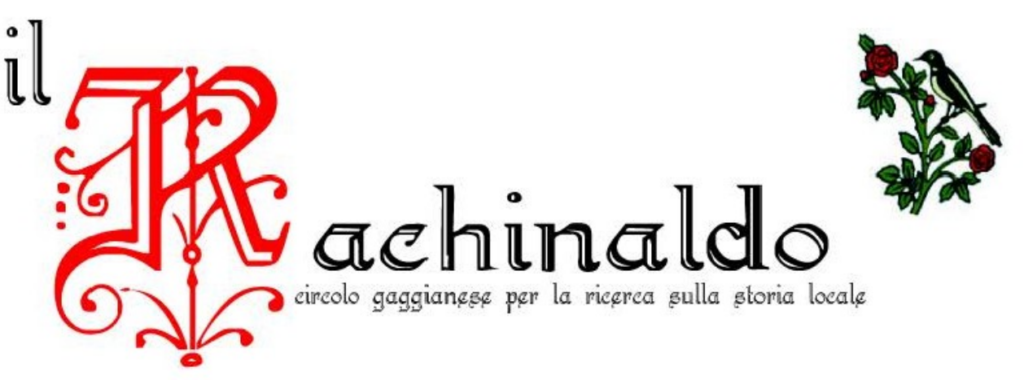
GIAVENO
LA FAMIJA DJ BERGÈ
I Bergè sono i margari o pastori che con i loro animali vivono sulle montagne e producono latte e formaggi, in estate con la transumanza portano i loro greggi e mandrie in alpeggio.
A Giaveno una coppia di Bergè ha dato il via al 1° Carnevale Giavenese il 14/02/1951 e nel corso degli anni è diventato tradizione sempre più radicata tanto da rafforzarsi e consolidarsi con nuovi mezzi tecnici, artistici, organizzativi e con simpatiche ed allegre rappresentazioni umoristiche e satiriche.
Nel 1952 e nel 1953 si aggiunge anche la figura del Sindaco del Carnevale, figura goliardica che in Municipio riceve le chiavi della città dal vero Sindaco che lo investe della carica per i giorni del Carnevale.
Dal 1956 furono affiancati anche i Bergerotti, un bambino e una bambina, “figli” dei Bergè.
Le maschere da sempre, nel periodo del Carnevale, fanno visita alle case di riposo, alle scuole, ospedale, Vigili del Fuoco e Croce Rossa.
Una volta andavano anche alla sede della Rai e alle redazioni dei giornali Torinesi e per concludere ad una serata della Fiera dei vini alla Pellerina.
Dal 1998 è ricomparsa la figura del Sindaco del Carnevale.
Da quest’anno a far parte della famiglia ci sono due nuove figure legate ai Bergè, Paric e Marin-a, che con la loro simpatia e disponibilità portano il nome di Giaveno alle più belle feste carnevalesche del Piemonte e non solo.
Al Carnevale sono sempre sfilati grandi carri; nei primi anni solo quelli delle Borgate e dei Commercianti, in seguito si è cominciato ad invitare i carri dei paesi vicini.
Alla sfilata prendono parte, oltre ai carri, gruppi mascherati e le Maschere Ufficiali dei paesi amici.
A conclusione del Carnevale si brucia il Titun come gesto propiziatorio di buon auspicio e prosperità e si restituiscono le chiavi della città all’Amministrazione.
I personaggi del Parinc e Marin-a sono interpretati da Luciano Silvestri e Rosa Pappadà.
The Bergè are the margari or shepherds who live in the mountains with their animals and produce milk and cheese. In the summer they bring their flocks and herds to the mountain pastures with transhumance.
In Giaveno a couple from Bergè started the 1st Giavenese Carnival on 02/14/1951 and over the years it has become an increasingly deep-rooted tradition, so much so that it has strengthened and consolidated with new technical, artistic, organizational means and with nice and cheerful humorous and satirical representations.
In 1952 and 1953 the figure of the Mayor of the Carnival was also added, a playful figure who in the Town Hall receives the keys to the city from the real Mayor who invests him with the role for the days of Carnival.
From 1956 the Bergerottis were also joined, a boy and a girl, “children” of the Bergès.
During the Carnival period, masks have always visited retirement homes, schools, hospitals, the Fire Brigade and the Red Cross.
Once upon a time they also went to the RAI headquarters and to the editorial offices of the Turin newspapers and to conclude at an evening at the Pellerina wine fair.
Since 1998 the figure of the Carnival Mayor has reappeared.
From this year, two new figures linked to the Bergès, Paric and Marin-a, join the family, who with their friendliness and availability bring the name of Giaveno to the most beautiful carnival parties in Piedmont and beyond.
At the Carnival there are always large floats paraded; in the first years only those from the Villages and Merchants, later we began to invite floats from neighboring towns.
In addition to the floats, masked groups and the official masks of friendly countries take part in the parade.
At the end of the Carnival, the Titun is burned as a propitiatory gesture of good omen and prosperity and the keys to the city are returned to the Administration.
The characters of Parinc and Marin-a are played by Luciano Silvestri and Rosa Pappadà.
Contatti:
Usseglio Ivana – Presidente Pro Loco
Email: proloco.giaveno@gmail.com
Facebook: Nuova Pro Loco Giaveno
Pappadà Rosa – Responsabile personaggi
Cell. 334/1244293
Email: rosarossa49@libero.it
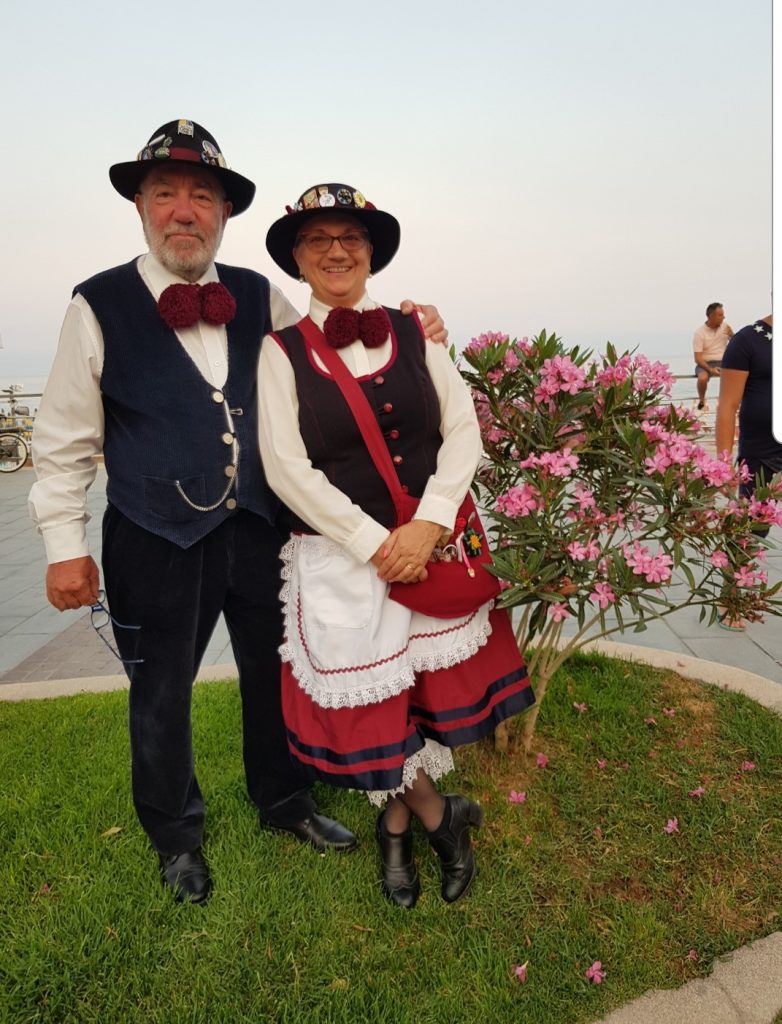
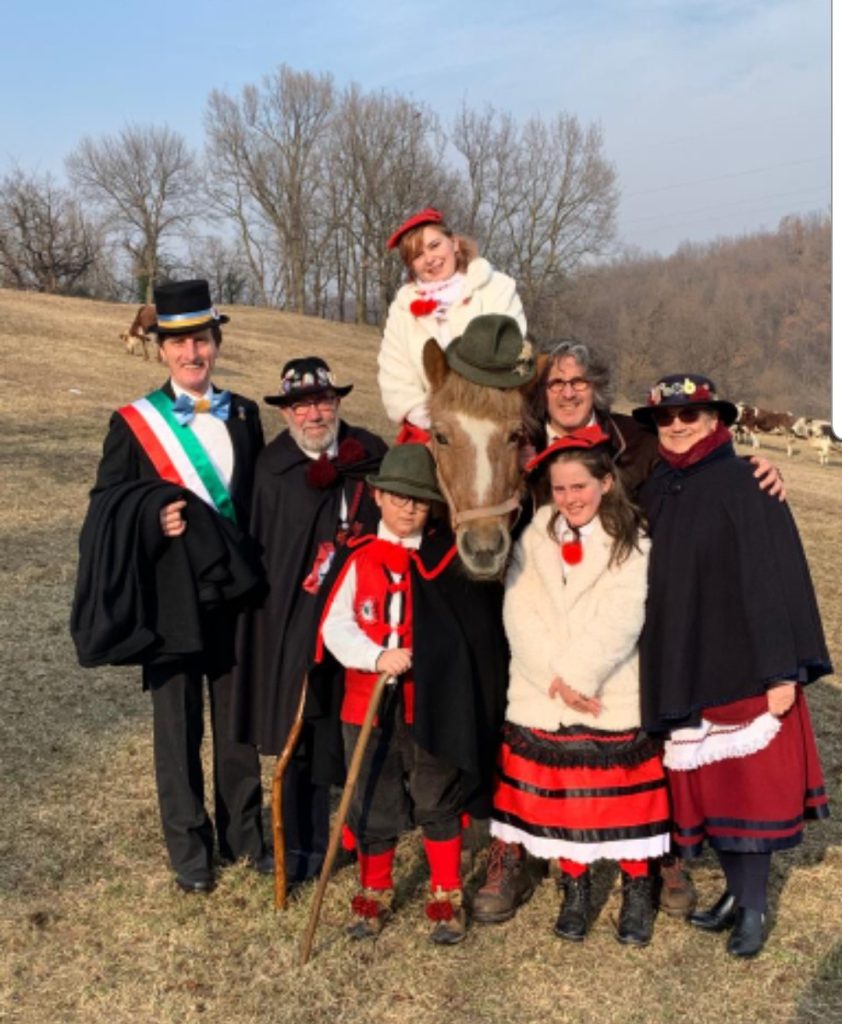
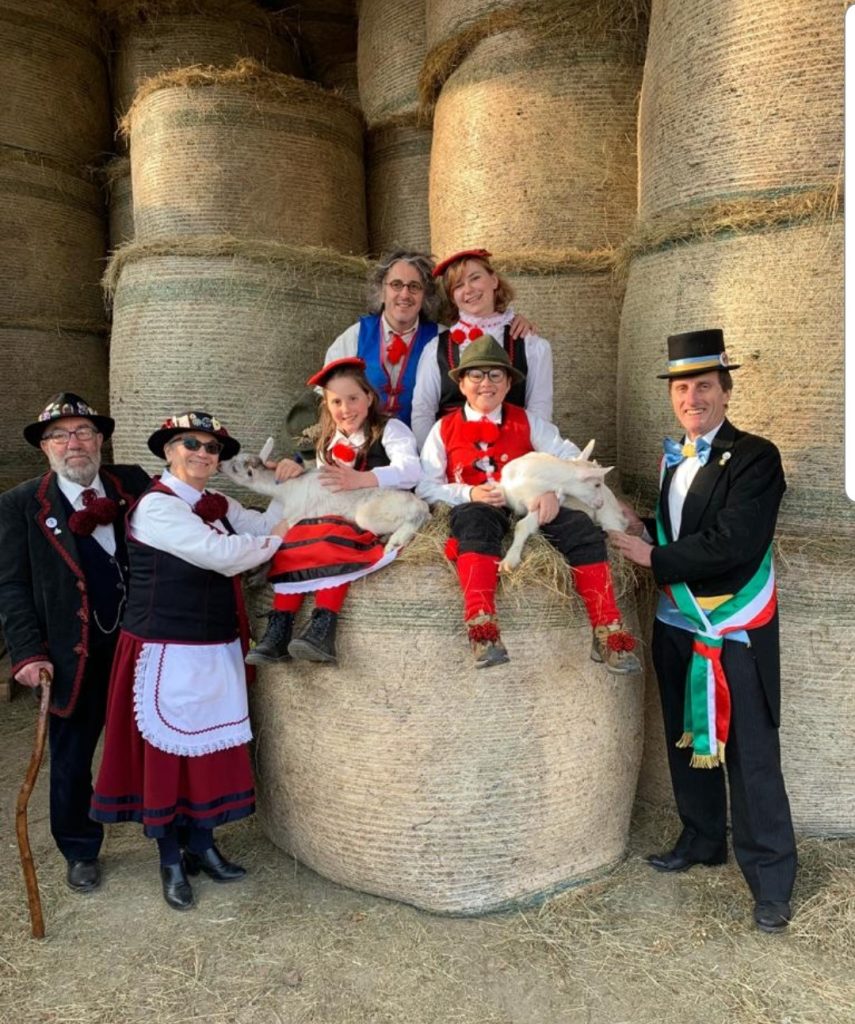
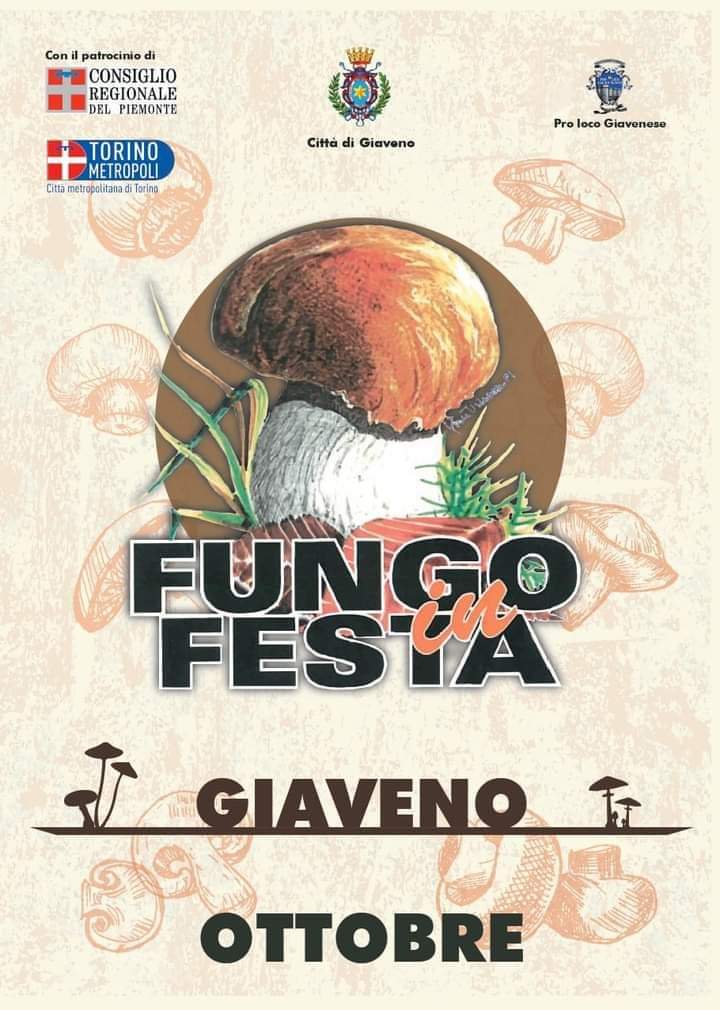
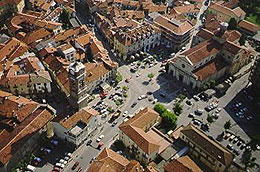
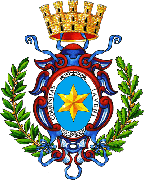
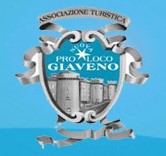
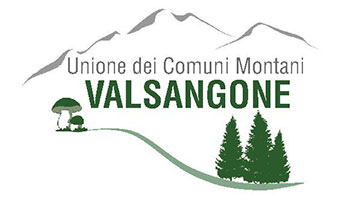
GRIGNASCO – frazione sagliaschi
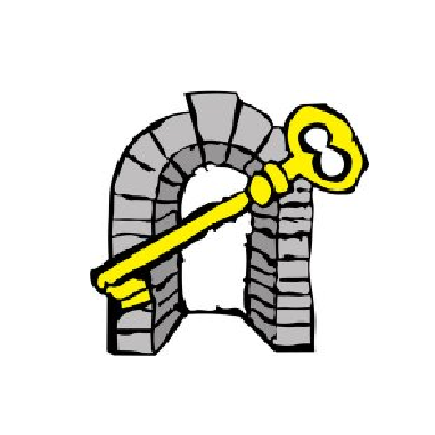
CARNEVALE DEL SIMP – MARCHESE E MARCHESA
Il Comitato Carnevale del Simp nasce nel 1992 da un gruppo di amici che decidono di creare una festa per valorizzare un piccolo borgo di Grignasco. Perché Marchesi? Il tutto trae origine da una canzone ottocentesca del carnevale grignaschese dove, oltre alla figura principale del Duca del Torchio si affianca il “Marchese dal prà grand”, da cui si ispira il “Marchese dal Simp”. Perché “Simp”? Il nome è legato ad un vecchio termine catastale utilizzato per i cortili tra case con un classico portone a volta tonda di ingresso, adottato come simbolo del gruppo, e dove si svolgono le nostre manifestazioni. Oggi il Comitato conta su una ventina di persone, che cercano di mantenere viva una piccola tradizione carnevalesca.
The Simp Carnival Committee was founded in 1992 by a group of friends who decided to create a party to enhance a small village in Grignasco. Why Marchesi? It all originates from a nineteenth-century song of the Grignasco carnival where, in addition to the main figure of the Duke of Torchio, the “Marchese dal prà grand” is flanked, from which the “Marchese dal Simp” is inspired. Why “Simp”? The name is linked to an old cadastral term used for courtyards between houses with a classic round vaulted entrance door, adopted as the symbol of the group, and where our events take place. Today the Committee has around twenty people, who try to keep a small carnival tradition alive.
Contatti:
Barbero Gisella- Presidente
Cell: 351/8710895
Email carnevalesimp@gmail.com
Facebook: marchesato dal simp
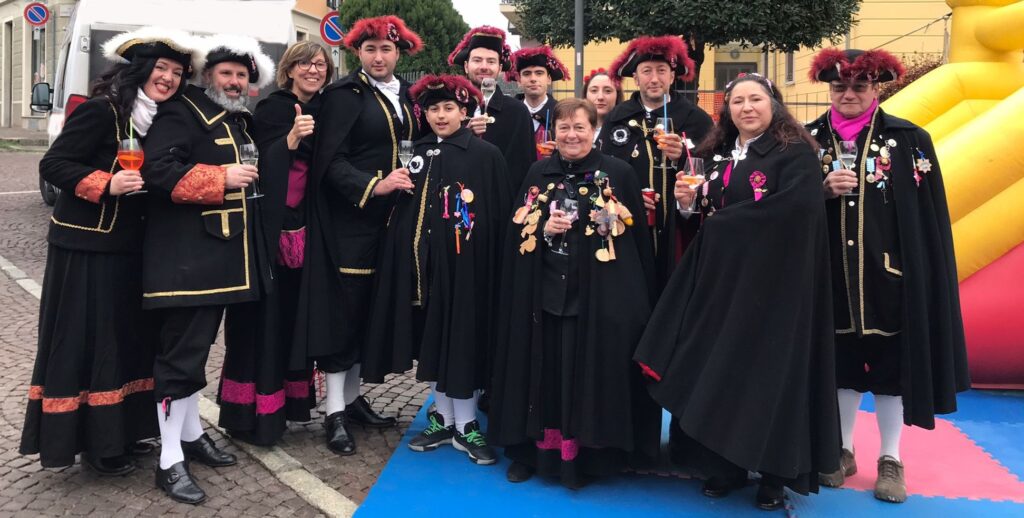
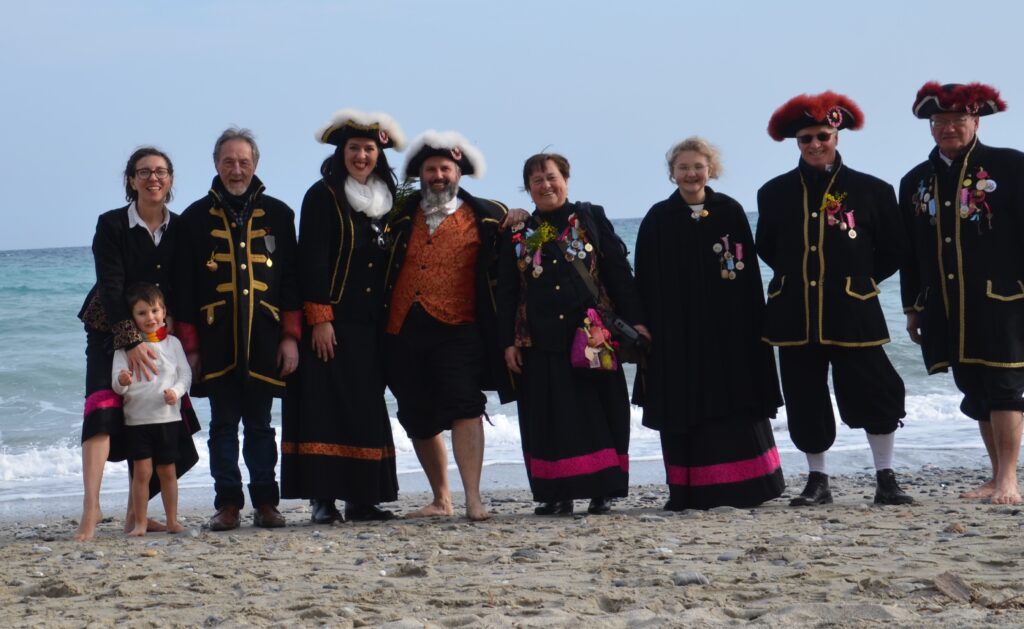
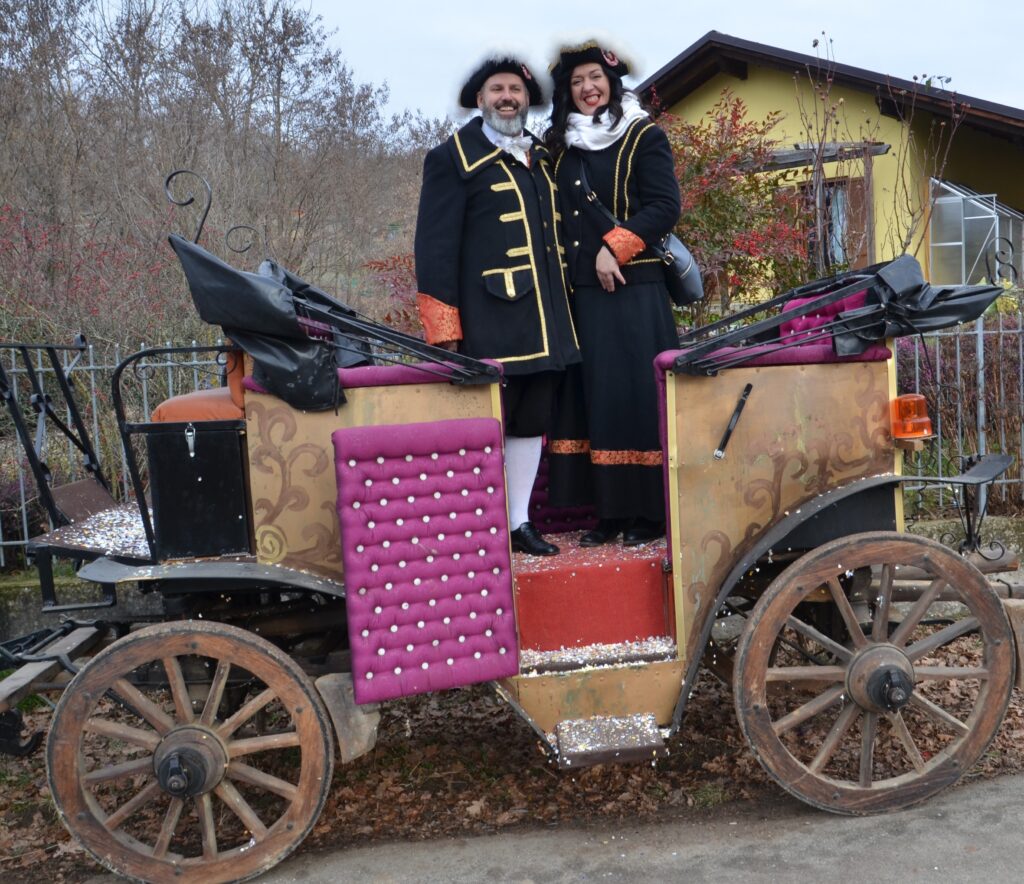
GRUGLIASCO
CARLEVÈ GRULIASCHEIS
Grugliasco è un comune di circa 40.000 abitanti che si trova nella cintura ovest di Torino. Nel 1974 nasce il Carlevè Gruliascheis per iniziativa dell’Associazione Ex-Allievi della scuola “La Salle” con i suoi personaggi la Bela Parpojina (la bella pidocchia) e Monsu Ravanin (signor Ravanello).
I nomi dei personaggi derivano dal modo irridente in cui erano chiamati gli abitanti del centro di Grugliasco, Parpojin, mentre quelli della Borgata Gerbido venivano chiamati Ravanin.
Gli altri personaggi sono: Madama Lesna (signora Lesna) e Monsu Pinin della Borgata Lesna, Giandoja e Giacometta della Borgata S. Maria
Grugliasco is a municipality of around 40,000 inhabitants located in the western belt of Turin. In 1974 the Carlevè Gruliascheis was born on the initiative of the Ex-Pupils Association of the “La Salle” school with its characters Bela Parpojina (the beautiful louse) and Monsu Ravanin (Mr. Radish).
The names of the characters derive from the mocking way in which the inhabitants of the center of Grugliasco were called, Parpojin, while those of the Borgata Gerbido were called Ravanin.
The other characters are: Madama Lesna (Mrs. Lesna) and Monsu Pinin of Borgata Lesna, Giandoja and Giacometta of Borgata S. Maria
Contatti:
Giuseppe Baricada – Presidente
Cell: 329/7032043
Email: giuseppe.baricada@tiscali.it
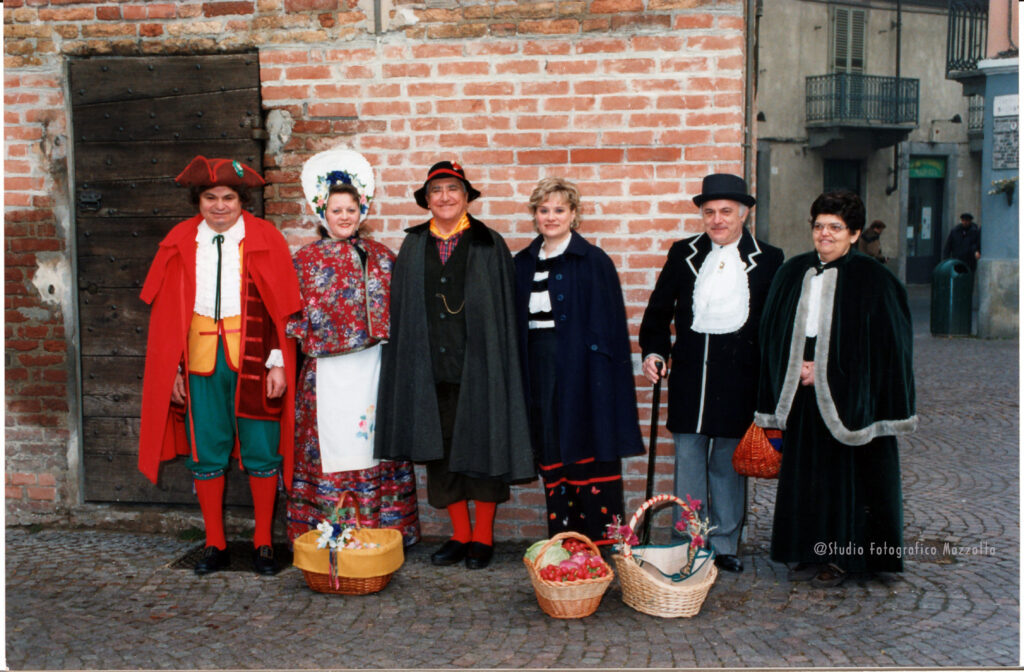
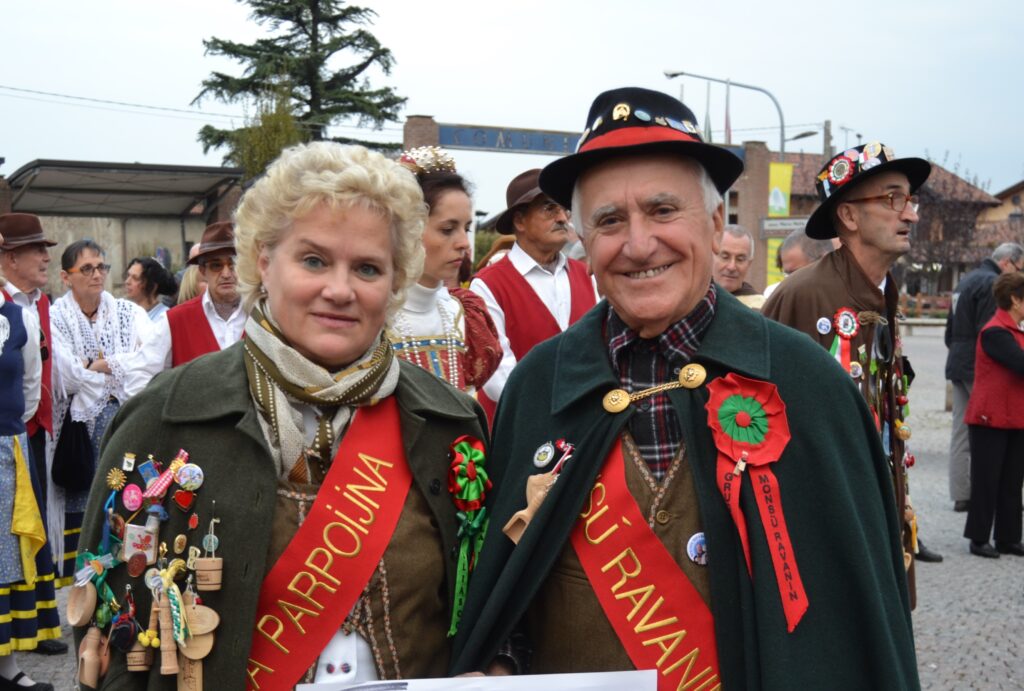
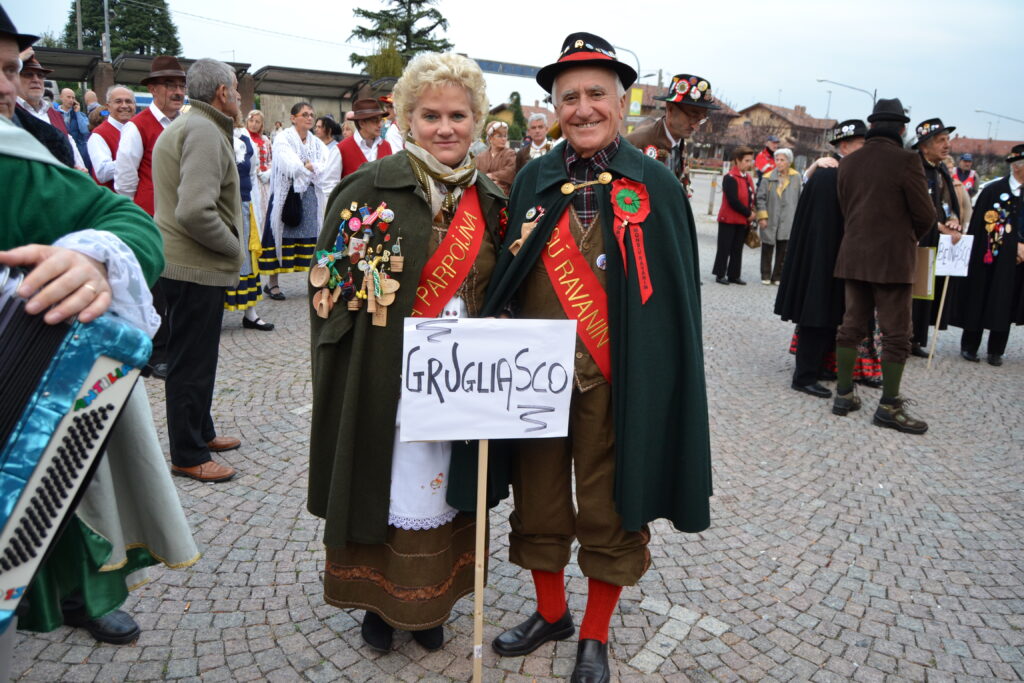
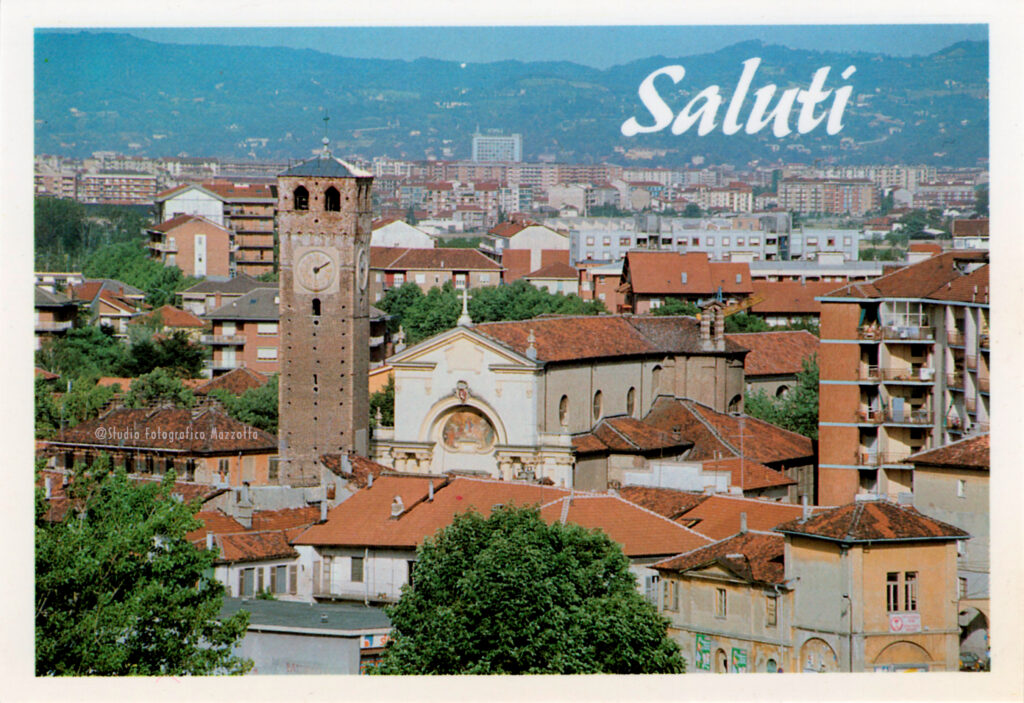
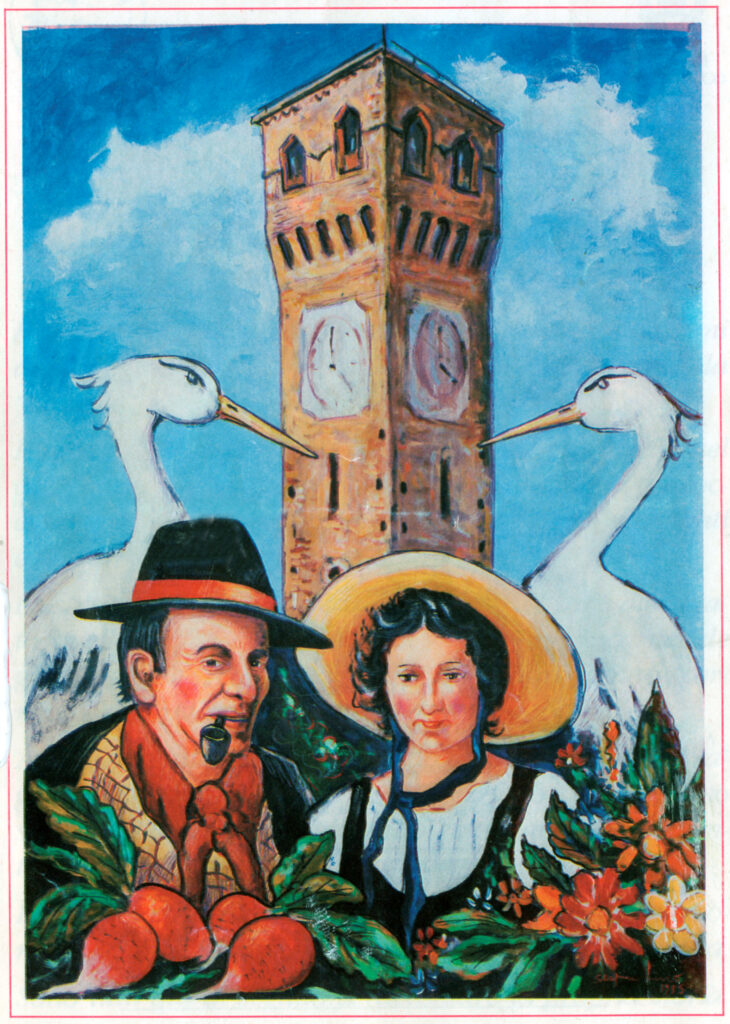
IMPERIA
GROCK “IL RE DEI CLOWN”
Adrien Wettach, nato a Reconvilier (Svizzera), il 10 gennaio 1880, consacrato “Re dei Clown” all’Olympia di Parigi nel 1919, fu una vera e propria star internazionale dall’inizio del ‘900 fino al suo addio alle scene nel 1954.
Fu un artista straordinario e grazie al suo talento diede alla “Maschera” del Clown un nuovo valore.
Capace di destreggiarsi dalla giocoleria all’equilibrismo, fu anche acrobata, funambolo, contorsionista, musicista e compositore, poliglotta, sottile e delicato umorista, che ammaliò il pubblico di tutto il mondo trasformando il suo rotondo nome d’arte in autentica leggenda.
Era amico di molti artisti famosi come Picasso, Charlie Chaplin, Stanlio e Ollio.
L’amore per il circo lo spinse a girare il mondo e quando approdò ad Imperia la scelse come residenza, trasformò lo spazio della sua proprietà in un vero e proprio circo di pietra, costruendo quella che verrà nominata “Villa Grock”, oggi di proprietà del comune di Imperia.
Grock non è un personaggio folkloristico o storico, è un artista a 360°, la cui espressione ricalca una “maschera” unica nel suo genere.
Il Re dei Clown è interpretato da Giulio Barucco, poliedrico attore Torinese profondamente affascinato da questo personaggio. In onore di Grock il Gruppo “I Cartapestai Disperati” di Ortovero ha realizzato questo fantastico carro allegorico che rappresenta il Re dei Clown nella sua veste da musicista.
Artefici di questa rappresentazione sono gli artigiani: Marico e Katia Ferrari, Enrico Parodi, Fabrizio e Flora Ferrari, Daniela Ardoino, Christian Enrico, Danilo Fangazio, Giulia Intili, Sara Zunino, Matteo Buscemi e Silvestro Catelli.
Adrien Wettach, born in Reconvilier (Switzerland), on 10 January 1880, anointed “King of the Clowns” at the Paris Olympia in 1919, was a true international star from the beginning of the 20th century until his farewell to the stage in 1954 .
He was an extraordinary artist and thanks to his talent he gave the Clown’s “Mask” a new value.
Capable of juggling and balancing, he was also an acrobat, tightrope walker, contortionist, musician and composer, polyglot, subtle and delicate comedian, who enchanted audiences all over the world, transforming his round stage name into an authentic legend.
He was friends with many famous artists such as Picasso, Charlie Chaplin, Laurel and Hardy.
His love for the circus pushed him to travel the world and when he landed in Imperia he chose it as his residence, he transformed the space of his property into a real stone circus, building what was called “Villa Grock”, now owned of the municipality of Imperia.
Grock is not a folkloristic or historical character, he is a 360° artist, whose expression follows a one-of-a-kind “mask”.
The Clown King is played by Giulio Barucco, a multifaceted actor from Turin who is deeply fascinated by this character. In honor of Grock, the “I Cartapestai Desperati” group from Ortovero created this fantastic allegorical float which represents the King of Clowns in his role as a musician.
The creators of this representation are the artisans: Marico and Katia Ferrari, Enrico Parodi, Fabrizio and Flora Ferrari, Daniela Ardoino, Christian Enrico, Danilo Fangazio, Giulia Intili, Sara Zunino, Matteo Buscemi and Silvestro Catelli.
Contatti:
Barucco Giulio – Interprete
Email giuliobarucco@tiscali.it
Cell. 328/4647525
